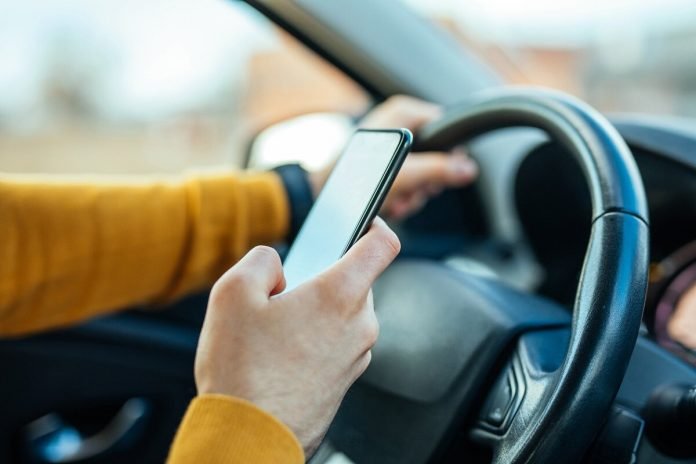What Does it Mean that Florida’s Texting While Driving Law is a Primary Offense? Florida has passed a law designating texting while driving as a primary offense. This legislative update marks a significant step in the fight against distracted driving, altering how law enforcement can enforce anti-texting regulations.
Previously, texting while driving was a secondary offense, meaning a driver could only be penalized if stopped for a different violation, like speeding or not obeying a traffic signal. With its new status as a primary offense, officers can now pull over and ticket drivers exclusively for texting when driving, enhancing road safety for all.
Recognizing the significance of this shift is vital, as it not only underscores the perils of texting on the road but also brings attention to the legal repercussions drivers might face for such dangerous actions.
Definition of “Texting While Driving”
Texting while driving refers to the act of sending, reading, or writing text messages, or emails, or making similar use of the web on a mobile device while operating a motor vehicle.
In Florida alone, it’s estimated that nearly 5% of all motor vehicle accidents are attributed to texting while driving. Nationwide, the numbers are even more alarming. According to the National Highway Traffic Safety Administration (NHTSA), distracted driving accounted for 8.5% of all fatal crashes in recent years, with texting while driving being a major contributor.
Read More: Car Accident Lawyer San Francisco Dolan Law
What is a Primary Offense?
In legal parlance, an offense being termed as “primary” means that a law enforcement officer can pull over and cite a driver solely for that specific violation without any other reason. This contrasts with “secondary” offenses, for which a driver can only be cited if they were initially pulled over for a different, primary offense.
For Floridians, this categorization carries significant implications. It means that merely being seen texting while driving by a law enforcement officer is grounds enough for being pulled over and receiving a citation. Drivers no longer have the veil of other traffic violations as a buffer. This move amplifies the seriousness with which Florida views the dangers of texting while driving and serves as a potent reminder to motorists to keep their eyes on the road and off their screens.
History and Evolution of the Law
Florida’s Previous Stance on Texting While Driving:
Before the amendment that made texting while driving a primary offense, Florida’s stance was comparably lenient. Originally, texting while driving was classified as a secondary offense, which meant that law enforcement officers could only cite drivers for this offense if they were stopped for another traffic violation first.
Changes and Evolution Leading Up to It Becoming a Primary Offense:
Over the years, as the alarming statistics of accidents caused by texting while driving surged, there was mounting pressure on lawmakers to take more stringent actions. Advocacy groups, bereaved families, and concerned citizens lobbied for stricter measures. Recognizing the urgency, Florida’s legislature reclassified texting while driving as a primary offense in an effort to curb this dangerous behavior more effectively.
Comparisons with Other States’ Laws on the Subject:
Across the U.S., states vary in their approach to combat texting while driving. While the majority have made it a primary offense, some states still treat it as a secondary violation. For instance, states like Nebraska and Ohio treated texting while driving as a secondary offense. On the other hand, states like California, New York, and Texas have stringent laws similar to Florida’s, aiming to deter drivers from this perilous habit.
Dangers of Distracted Driving

Engaging in activities like texting when behind the wheel significantly endangers the well-being of those in the vehicle as well as those outside it, including pedestrians. The chance of collisions and resulting harm rises when drivers divert their focus from navigating the road.
Accidents and Injuries
Data from the National Highway Traffic Safety Administration (NHTSA) indicate that distracted driving was implicated in roughly 3,000 fatalities and caused about 400,000 injuries in 2019. Among the various types of distracted driving, texting is particularly hazardous, as it distracts a driver visually, manually, and cognitively.
The perils of texting while driving are underscored by these figures:
- The likelihood of a crash is increased 23-fold by texting.
- Reading a text typically takes about 5 seconds, a duration in which a car at 55 mph can cover more than the length of a football field.
- Research from the Virginia Tech Transportation Institute shows that even a brief 2-second glance away from the road can double the danger of an accident.
The spectrum of injuries from such incidents can be broad, from minor to critically severe, sometimes resulting in lasting disabilities and financial burdens due to medical expenses.
Read Also: Bail Money Loans Rowland Heights CA
Fatalities
Beyond raising the risk of crashes and injuries, texting while driving has fatal consequences. The NHTSA reported that in 2019, distracted driving was a factor in the deaths of 3,142 individuals.
Younger drivers are especially susceptible to fatal incidents due to distracted driving, often engaging more frequently in unsafe practices such as texting while driving. Legislators and safety advocates consider the prevention of these deadly incidents a critical concern. The enactment of laws making texting while driving a primary offense in states like Florida marks an important measure toward improving road safety
Consequences of Texting While Driving in Florida
Fines and Penalties Associated: First-time offenders in Florida face a fine of $30, while subsequent offenses within a five-year period attract a $60 fine. It’s worth noting, however, that these amounts can increase with additional fees and costs depending on the jurisdiction.
Points on a Driving Record: A first offense does not add points to a driver’s record. However, if a second offense occurs within five years of the first, three points are added. Additionally, texting while driving that results in a crash will add six points to the driver’s record.
Potential Impact on Insurance Rates: Accruing points and violations on one’s driving record can lead to an increase in insurance premiums, as insurers see such drivers as higher risks.
Other Legal Ramifications: If a driver is found to be texting during an accident that causes bodily harm or death, they could face more severe legal penalties. This could range from larger fines and more points on their license to potential lawsuits and even criminal charges.
Benefits of the Law
Reduction in Texting While Driving Incidents:
Since the law’s implementation, there has been a noticeable decline in the number of texting-while-driving incidents. Law enforcement agencies have reported fewer cases, attributing this drop to the heightened awareness and deterrence the law provides.
Increased Safety on Florida’s Roads:
With fewer drivers texting, roads are naturally safer. The likelihood of accidents caused by distracted driving has decreased, making it safer for both motorists and pedestrians.
The Potential Deterrence Effect on Drivers:
The shift from a secondary to a primary offense signals the state’s stern view on the issue. This, coupled with the potential fines, points, and insurance rate hikes, serves as a strong deterrent for drivers, pushing them to think twice before picking up their phones while on the road.
Also Read: Personal Injury Attorney San Fransisco Dolan Law
Critics and Controversies
Arguments Against Making Texting While Driving a Primary Offense:
While the safety rationale behind making texting a primary offense is clear, some critics argue it grants law enforcement excessive power. They believe that such authority might lead to unwarranted stops, potentially infringing upon individual rights and leading to situations where citizens are harassed without due cause.
Concerns About Racial or Demographic Profiling:
There’s an underlying fear that this law might inadvertently enable racial or demographic profiling. Critics expressed concerns that certain groups might be disproportionately targeted or stopped under the pretext of this law, further exacerbating systemic issues related to profiling.
The Debate on Personal Freedom vs. Public Safety:
At the heart of this debate is the balance between individual rights and collective safety. While most agree that public safety is paramount, where to draw the line between ensuring safety and ensuring individual freedoms is a matter of contention. Critics ask: At what point does regulation become overreach?
Tips for Florida Drivers
- Before starting your journey, set your phone to “Do Not Disturb” mode.
- Keep your phone out of arm’s reach, perhaps in the glove compartment or the back seat.
- If you must check your phone, pull over safely to the side of the road.
- Invest in Bluetooth headsets or in-car systems to answer calls hands-free.
- Use voice-activated assistants like Siri or Google Assistant to read texts out loud or send messages.
- Set up auto-replies for incoming messages, informing the sender you’re driving and will respond later.
- Young drivers should be educated on the dangers of distracted driving from the start.
- Encourage them to establish a “phone-free” driving habit early on.
- Use apps that block texting or notifications while driving.
Conclusion
What Does it Mean that Florida’s Texting While Driving Law is a Primary Offense? Understanding the intricacies of Florida’s texting-while-driving law isn’t just about avoiding fines or penalties – it’s about fostering a culture of safety on the roads. As we navigate the modern challenges brought on by technological advancements, it becomes crucial to adapt our habits and behaviors. While debates around the law and its implications are valid, the call to action remains clear: prioritize safety above all. It’s a collective responsibility, one that, when embraced, ensures a safer driving environment for all.


[…] What Does it Mean that Florida’s Texting While Driving Law is a Primary Offense? […]